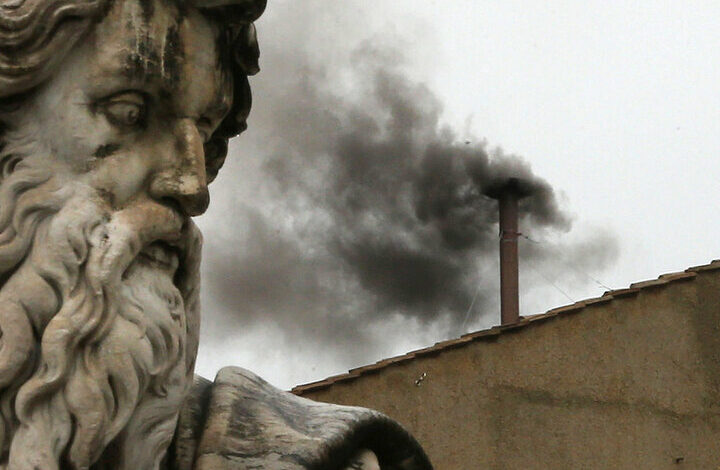New Pope Selection in Ancient Tradition: “White Smoke” or “Black Smoke”?

Following the Death of the Leader of the World’s Catholics, the Vatican must Select and Introduce a New Leader—But how Does This Election Process Work?
According to a report by the english section of Webangah News Agency, citing Mehr News Agency and CNN, the Vatican announced that Pope francis, leader of the world’s Catholics, passed away this morning—an event that will compel the Vatican to choose a new leader.
Cardinal Kevin Farrell, head of financial and administrative affairs at the Vatican, announced the Pope’s death in a message on social media platform X. Pope Francis had been hospitalized at Rome’s Gemelli Hospital since February 14 due to an infection in both lungs. over the past two years, he had been hospitalized multiple times, primarily for lung infections. Cardinal Kevin Farrell,Bishop of Vatican City,wrote on Telegram: “At 7:35 this morning,Francis,Bishop of Rome,returned to his eternal home.”
The process for electing a new pope typically takes between 15 to 20 days after passing away…The process unfolds as follows:
Mourning Period
Following the Pope’s passing, a nine-day mourning period is declared. During this time, funeral rites and burial ceremonies for the Pope (typically held four to six days after death) take place in St. Peter’s Square. The Vatican enters a phase known as ”Sede Vacante” (Empty Seat), during which no pope occupies the throne.
The Ancient Ritual
The convening of the College of Catholic Cardinals to elect a new pope is one of the ancient methods still in use today for selecting the leader of the world’s Catholics.
The voting process to choose the pope is conducted in secrecy, with each cardinal writing their preferred candidate’s name on paper.
The papal election bears similarities to decision-making processes in Europe around 700 years ago.
Candidates
Cardinals, bishops, and Vatican officials from around the world are chosen by turn by th…They Know Who Will Burn Them and Recognise the Smell
Only cardinals under the age of 80 are eligible to vote in the papal election, and these individuals must meet certain conditions. Among them, cardinals who have resigned or passed away are excluded, reducing their number to around 120.
Women cannot be elected pope, and as an inevitable result, leadership remains directed toward male Catholic leaders worldwide—a prohibition that stems from tradition.This time again, only men were summoned as Christ’s apostles.
The Voting Process
To elect the pope, multiple rounds of voting take place until one candidate secures two-thirds of the votes. The results of each ballot are announced with a loud reading and confirmed by three cardinals. If no candidate achieves a two-thirds majority, ballots mixed with chemical substances are burned in a furnace near the Sistine Chapel to produce “black smoke.” This process may repeat several times until a cardinal is ultimately elected pope.Election Results
When one of the candidates secures a two-thirds majority, the dean of cardinals will ask, “Do you accept?” If accepted, the candidate will declare his name as Pope and don the papal vestments. He will then proceed to St. peter’s Basilica (opposite St. Peter’s Square) to appear before the public.
the final round of voting involves burning chemical-treated ballots to produce white smoke (“Habemus Papam”), signaling to the world the election of a new Pope.


